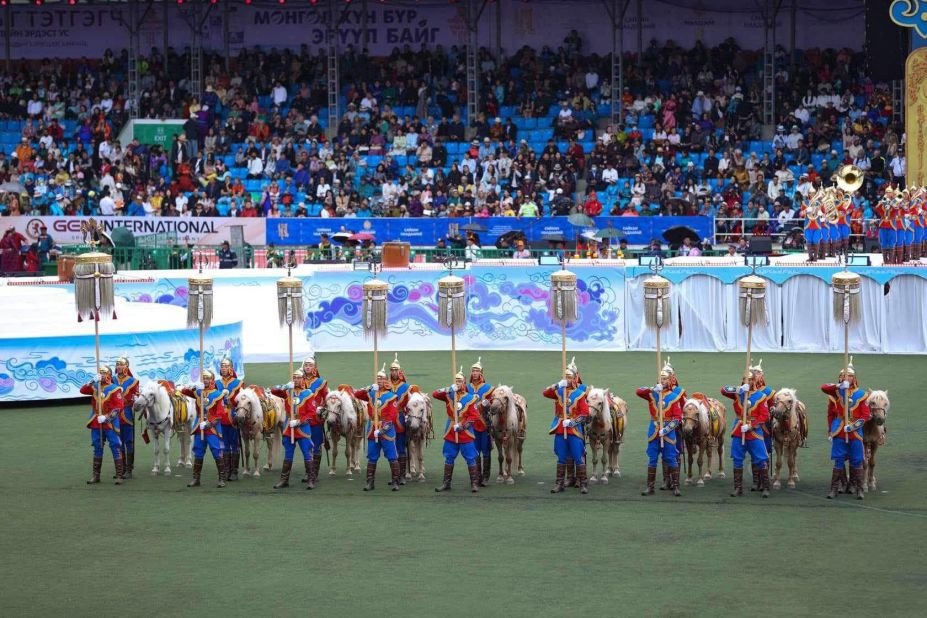Mongolia has long been associated with vast plains, nomadic lifestyles, and the legendary figure of Genghis Khan. Despite the great Khan’s demise in 1227, his influence continues to echo across the country. One of Mongolia’s most significant annual events, the Naadam festival, serves as a testament to this enduring legacy and has become a major attraction for both locals and international tourists.
Often referred to as “Eriin Gurvan Naadam,” meaning “Three Manly Games,” the festival boasts a history of over 2,000 years. Originally developed as a preparation for war, Naadam features three main competitions: Mongolian wrestling, archery, and horse racing. This celebration of sports and arts is deeply rooted in Mongolia’s nomadic culture and heritage, making it the largest and most important gathering in the country.
The festival takes place over several days, with the main official event occurring from July 11-13 in Ulaanbaatar’s National Stadium. During this time, 21 provinces across Mongolia join in the festivities, showcasing their traditional nomadic way of life. Naadam has become a symbol of national identity, reflecting pride, joy, and happiness on the faces of participants and spectators alike.
The origins of Naadam date back to the era of Genghis Khan, who, in the early 13th century, celebrated victories by organizing these games. The trio of events – archery, horse riding, and wrestling – were considered essential for building skills among the nomads and Mongolian soldiers. The Stele of Genghis Khan, a historical artifact dating back to the 1200s, depicts scenes from the festival, reinforcing its cultural significance.
In 1921, Naadam was officially declared an annual national holiday in Mongolia. The festival’s rituals and customs emphasize respect for nature and the environment, contributing to its designation as part of the UNESCO List of the Intangible Cultural Heritage of Humanity in 2010.
The Naadam holiday was extended from three to five days by the Mongolian Government in 2020, with much of the country shutting down during this period. The festival attracts over 11,000 international tourists during its celebration, making it one of the most popular times for travelers to visit Mongolia. In an effort to boost tourism, the Mongolian government declared 2023-2025 as the “Years to Visit Mongolia,” allowing travelers from additional nationalities to visit visa-free for up to 30 days.
While the main festivities take place in Ulaanbaatar, smaller Naadam games are held across the Mongolian countryside. Tour companies offer alternative experiences for those looking to explore these regional celebrations.
The main event in Ulaanbaatar features a grand opening ceremony showcasing Mongolian dance, music, and cultural traditions. The Nine White Banners, a sacred emblem of Mongolia, are paraded during the ceremony, symbolizing peace negotiations and festivals since the time of Genghis Khan.
The games themselves include wrestling, archery, and horseracing competitions. Wrestling matches are particularly intense, with no age, time, or size limits. Archery competitions take place at the National Archery Field, while horseracing competitions test the endurance of horses and are primarily ridden by child jockeys.
Naadam is also a time for delicious traditional foods, with vendors and markets offering a variety of treats outside the game venues. The iconic khuushuur, a deep-fried meat dumpling, is a popular snack enjoyed by spectators.
Securing tickets for Naadam, especially for the opening and closing ceremonies, requires advanced planning, as they are limited and in high demand. Travelers are advised to book accommodations and tickets well in advance through tour companies or local hosts.
In conclusion, the Naadam festival in Mongolia encapsulates the spirit of the nation, celebrating its rich cultural heritage and providing a unique and immersive experience for both locals and visitors.
Paris sightseeing
Book Paris activities
Louvre museum paris
Paris limousine rental
Rolls Royce Paris
Eiffel Tower Paris
Airport Transfer Paris
Book Paris Taxi
Seine River Cruise
Wine Tasting Paris
Paris luxury hotels
Switzerland luxury hotels
Europe Car rental
Europe coach rental
Paris Limousine
Dior Paris
Beauvais Airport transfer
